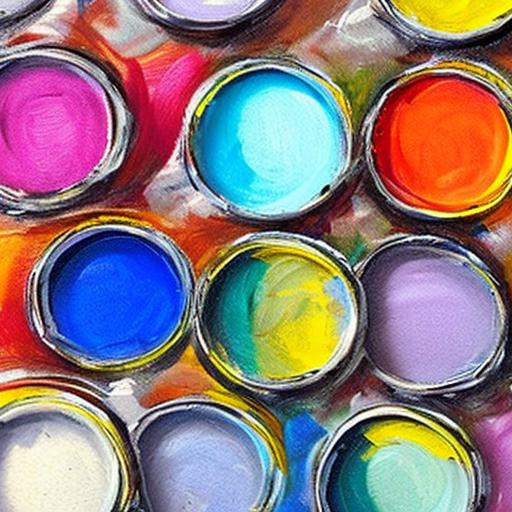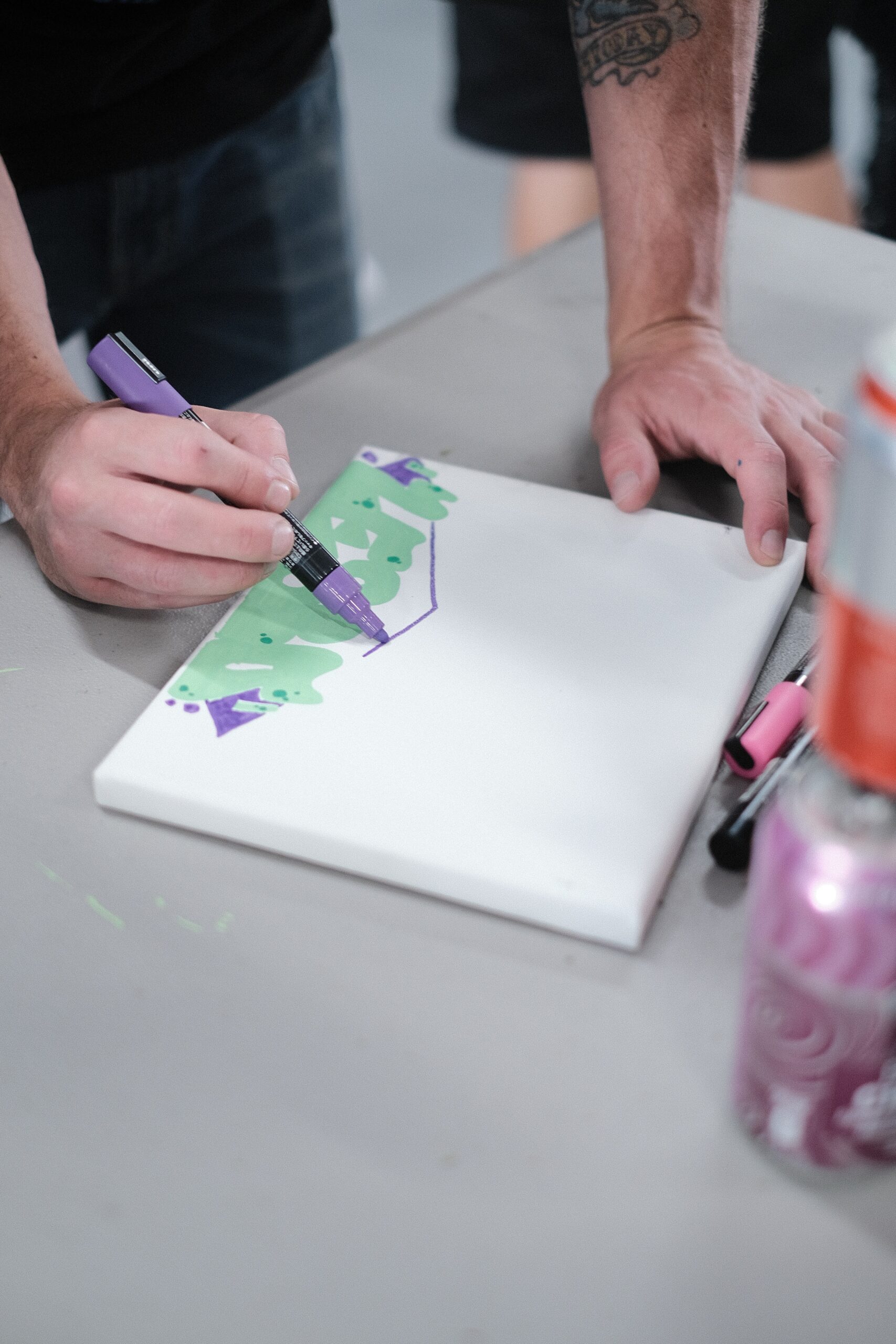Acrylic paint has become a popular choice among artists due to its versatility and vibrant colors. But, when it comes to airbrushing, many wonder if this medium can be successfully used. In this article, we will explore the feasibility of using acrylic paint in an airbrush, discussing the benefits, challenges, and techniques that can help you achieve stunning results. Whether you are a professional artist or a hobbyist looking to elevate your airbrushing skills, this article will provide you with invaluable insights into the compatibility of acrylic paint and airbrushing techniques.
Understanding Acrylic Paint
Acrylic paint is a popular medium used by artists, hobbyists, and professionals alike. It is a versatile and fast-drying paint that offers a range of benefits and characteristics. By understanding the composition of acrylic paint, its characteristics, and the different types available, you can make informed decisions about its usage in airbrushing.
Composition of Acrylic Paint
Acrylic paint consists of pigment particles suspended in an acrylic polymer emulsion. The pigment provides the color, while the acrylic polymer acts as a binder, giving the paint its adhesive properties. Additional additives such as fillers, extenders, and drying agents may also be included in the paint formulation.
Characteristics and Benefits
The characteristics of acrylic paint make it an attractive choice for many artists. It has a smooth, buttery consistency that can be easily manipulated on various surfaces. Acrylic paint is also known for its vibrant colors, excellent lightfastness, and durability. Furthermore, it dries quickly, allowing for efficient layering and faster completion of artwork.
Different Types of Acrylic Paint
There are various types of acrylic paint available, each with its own unique properties. These include student-grade, artist-grade, heavy body, fluid, and acrylic gouache. Student-grade acrylics are more affordable and have lower pigment concentrations, while artist-grade acrylics offer higher quality pigments and better color intensity.

This image is property of images.unsplash.com.
Using Acrylic Paint in Airbrush
An airbrush is a tool that sprays paint onto a surface using compressed air. While acrylic paint is primarily used with brushes, it can also be used in airbrushes with certain considerations and preparations.
Compatibility with Airbrushes
Acrylic paint is generally compatible with airbrushes, although some adjustments may be required for optimal performance. The viscosity or thickness of the paint should be adjusted to match the airbrush’s spraying capabilities. Additionally, the airbrush needle size and pressure settings should be appropriate for the paint being used.
Preparation and Thinners
Before using acrylic paint in an airbrush, it is essential to prepare the paint for optimal performance. This can be done by thinning the paint with an appropriate acrylic thinner or water, depending on the brand and type of paint. Thinning the paint helps to ensure proper flow through the airbrush and prevents clogging.
Airbrush Techniques for Acrylic Paint
Using acrylic paint in an airbrush requires some specific techniques to achieve desired results. It is recommended to start with thin layers of paint and gradually build up the desired opacity. maintaining consistent air pressure and using smooth, even strokes will help to achieve an even application.

This image is property of images.unsplash.com.
Advantages of Using Acrylic Paint in Airbrush
Using acrylic paint in an airbrush offers several advantages that make it a favorable choice for many artists and airbrush enthusiasts.
Versatility and Range of Colors
acrylic paint is available in a wide range of colors, allowing artists to explore their creativity and achieve desired outcomes. The paint can be easily mixed to create custom colors or diluted for translucent effects. This versatility allows for a broad spectrum of artistic possibilities when using acrylic paint in airbrushing.
Fast Drying Time
One of the significant advantages of acrylic paint is its fast drying time. Unlike other paint mediums such as oils, acrylics dry quickly, enabling artists to work efficiently and layer their artwork without excessive waiting time. This rapid drying time is particularly beneficial for those utilizing airbrushing techniques.
Ease of Use and Clean-up
Acrylic paint is known for its ease of use, making it suitable for artists of all skill levels. Its water-based nature allows for easy clean-up with soap and water, reducing the need for harsh solvents. Additionally, acrylic paint does not emit strong fumes, making it a more pleasant and accessible medium to work with.

This image is property of images.unsplash.com.
Considerations and Limitations
While acrylic paint can be successfully used in airbrushes, there are some considerations and limitations to be aware of to ensure optimal results.
Airbrush Needle Size and Pressure
The needle size and pressure settings of the airbrush can significantly impact the performance of acrylic paint. Using a smaller needle size may result in clogging or tip dry, while excessive pressure can cause overspray or inconsistent coverage. It is crucial to experiment and make adjustments to find the optimal settings for the specific acrylic paint being used.
Clogging and Tip Dry
Acrylic paint has the potential to clog the airbrush, especially if it is not properly thinned or strained to remove any clumps or impurities. Tip dry, where paint residue accumulates on the tip of the airbrush needle, can also occur. Regular maintenance, including cleaning and periodic flushing of the airbrush, can help mitigate these issues.
Dilution and Opacity
Achieving the desired opacity can be a challenge when using acrylic paint in airbrushing. Thin layers of paint are often required to prevent clogging, but this may result in a more translucent finish. Artists may need to adjust the dilution and layering techniques to achieve the desired level of opacity in their artwork.

Tips for Using Acrylic Paint in Airbrush
To ensure optimal results when using acrylic paint in an airbrush, consider the following tips:
Start with Quality Acrylic Paint
using high-quality acrylic paint is essential for achieving superior results. Artist-grade paints generally offer better pigments, color intensity, and overall performance compared to student-grade paints. Investing in quality paint can greatly enhance the outcomes of airbrushed artwork.
Proper Fine-Tuning and Adjustments
To maximize performance, take the time to fine-tune and adjust the airbrush settings according to the specific acrylic paint being used. Experiment with different pressure levels, needle sizes, and airflow to find the right balance that works best for the desired effect.
Maintain Clean Equipment
Regular cleaning and maintenance of your airbrush equipment are crucial to prevent clogging, tip dry, and other issues. After each use, thoroughly clean the airbrush with an appropriate cleaning solution or water to remove any residual paint. This will help prolong the lifespan of your airbrush and ensure consistent performance.

Alternatives to Acrylic Paint in Airbrush
While acrylic paint is a popular choice for airbrushing, there are alternatives worth considering depending on the desired effect or specific requirements.
Watercolor and Gouache
Watercolor and gouache paints can also be used with an airbrush, providing different effects and techniques compared to acrylic paint. Watercolor offers transparent, delicate washes, while gouache provides more opaque, matte finishes. Experimenting with these alternatives can expand artistic possibilities in airbrushing.
Oil-based Paints
Oil-based paints, such as enamel or urethane-based paints, can also be used in an airbrush depending on the specific requirements of the project. These paints provide different handling properties and often require different thinners or solvents for proper use. It is essential to ensure compatibility and adequate ventilation when using oil-based paints.
Airbrush-specific Paints
For those looking for specialized performance or effects, there are airbrush-specific paints available on the market. These paints are formulated specifically for airbrushing and offer unique qualities such as exceptional flow, high coverage, or specialized finishes. While these paints may come at a higher cost, they can be valuable for achieving specific airbrushing results.
In conclusion, while acrylic paint can be successfully used in airbrushing, it is essential to understand its composition, characteristics, and considerations for optimal results. With proper preparation, techniques, and maintenance, acrylic paint offers versatility, vibrant colors, and ease of use in airbrushing applications. However, exploring alternatives such as watercolor, oil-based paints, or airbrush-specific paints can provide additional options and effects for airbrush artists.



